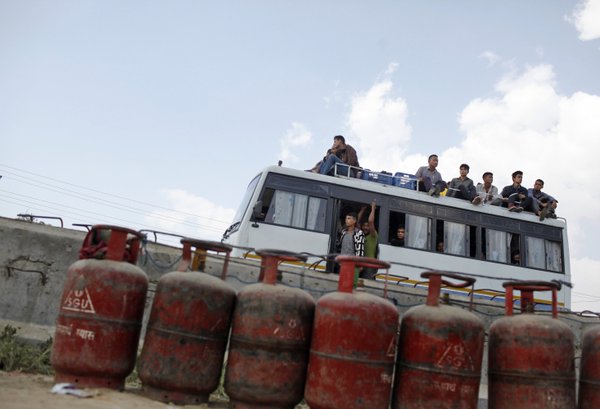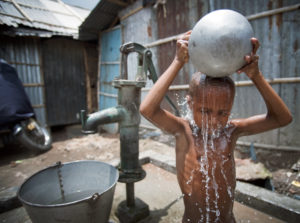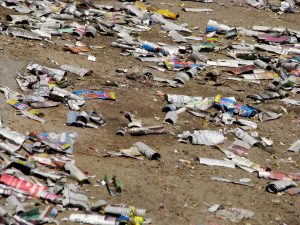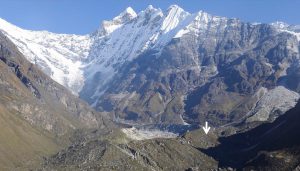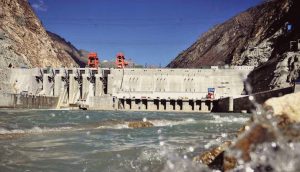In its wisdom, New Delhi had hoped that this blockade strategy would influence Kathmandu to provide a better deal for Madhesis in the constitution. Instead, it is proving to be a self-inflicted wound in many ways: besides pushing Nepal towards China, the blockade has raised the possibility of more severe floods in Bihar in the future.
Nepal is a mountainous country. When heavy rains occur there, the water flows into the major rivers and gushes into the plains and lowlands of Bihar, often causing devastating floods between June and September. Much of this misery occurs along the Kosi River, also called the “River of Sorrow”. Its intensity can be gauged from the fact that, in the past, the flood damage in Bihar has accounted for nearly half of India’s average annual flood losses.
Also read: Engineering disasters: Reporting from along Asia’s shared rivers
Every time it floods in Bihar, leaders in India invariably blame Nepal, but the truth is Nepal does not have the reservoir capacity to open or close the floodgates. Flooding in Bihar takes place due to a combination of factors, not least the deforestation in the Himalayan foothills in Nepal. Disturbingly, this deforestation has increased in the last few weeks due of India’s blockade strategy, leaving Nepal further vulnerable to floods, massive siltation, and shifting channel.
Nepal receives 60% of all imports and nearly all its oil and gas from India. As Delhi has stopped its flow of transport trucks – claiming protesters in southern Nepal were blocking the roads – shortage of gas supply has forced Nepali households to shift to firewood for cooking. In discussions with forest management groups in Nepal, you come across the common grouse that the blockade has driven people to deforest more lands in search of firewood.
Anti-India sentiment
Since the fuel shortage began, many airlines have cancelled flights to Kathmandu, while others are rerouting flights to refuel in India. In Kathmandu, the streets have become almost car-free and it is not easy to get a taxi. If you are lucky to get one, the price is four times more than usual.
I have been travelling in Nepal for nearly a week now. Nepal is not the same as what I had seen the last time I was here two years back. Of course, it has been recently devastated by a terrible earthquake and many people are still waiting for relief and rehabilitation. However, the country seems to be suffering more from Indian blockade-induced fuel shortages than the damage left behind by the earthquake.
Gas lines in the country go on for miles, and in some cases people have to wait for a week to get to the supply. In Lamjung, the epicentre of the April earthquake, there was no gas in my hotel kitchen and I was lucky to get dal bhat for two days cooked on stoves using firewood. Many in the country, like in Lamjung, have turned to burning wood to cook.
The blockade has also exploded anti-Indian sentiment across Nepal. This blockade policy has been a weapon used by India in the past as well to enforce its will on Nepal, but the sufferings of the common people and their anger against India are all too visible this time. Everywhere in Nepal the graffiti #backoffindia welcomes you. Giving the taste of his “first neighbourhood” policy, Prime Minister Narendra Modi has turned himself from Hero Number One in August 2014 to Enemy Number One in October 2015 in Nepal.
Closer ties with China
Nepal, sandwiched between India and China, tries hard to balance its relations with its two powerful neighbours. India’s dominant position in bilateral relationship has been consistently challenged by China for years now. Last year, China even replaced India as Nepal’s top foreign investor. In 2013, during my visit, the growing trading activities between Nepal and China were clearly evident at Kodari border town. Sino-Nepal trade was on the upswing in spite of India’s contestation until the earthquake partly damaged the land transport routes between two countries.
The fuel and gas shortage and the growing anger against India have ignited Nepal’s desire for closer ties with China. Already, China has started to send consignments of fuel. Waking up belatedly due to its rival’s intervention, India has been forced to increase the fuel supply to Nepal. But the damage is done. India’s mindless foreign policy strategy has not only deteriorated bilateral relationship, but has also pushed Nepal further into China’s influence. Those in Nepal who had some softness for India before have been marginalised in the last few weeks.
But, of course, this is how the Modi regime works – there is nothing in between. It is either offering 2,500 kilos of white sandalwood at the Pashupatinath temple or pushing Nepal to the wall by chocking essential supplies. If Delhi had mediated more carefully and on time, it might have persuaded Nepal to give the Madhesis a better deal in the constitution. It is apparent that the Indian policy on Nepal has failed to produce anything positive, just self-goals.
